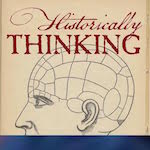Podcast: Download (Duration: 1:07:44 — 93.1MB)
Subscribe: Apple Podcasts | Spotify | Amazon Music | Android | Pandora | iHeartRadio | Blubrry | JioSaavn | Podchaser | Podcast Index | Email | TuneIn | Deezer | RSS
For generations, both Asians and Europeans have thought of the Silk Road has been thought of as a highway connecting east to west. But what if both Asians and Europeans have gotten the whole point of the Silk Road wrong. What if instead of connecting the two important ends of Eurasia by bridging the empty central bit, the whole point of the Silk Road was that it was really a network that connected the heart of Eurasia to its distant peripheries. And what if it was thanks to the influences that filtered down that network of roads, the societies at the peripheries were transformed over a period of millennia, with certain eras seeing very rapid changes indeed—particularly from the thirteenth to the sixteenth century
My guest today is Pamela Crossley, the Charles and Elfriede Collis Professor of History at Dartmouth College, where she specializes in the quing empire and modern Chinese history. Her most recent book is Hammer and Anvil: Nomad Rulers at the Forge of the Modern World, published in 2019; and it is the focus of our conversation today.
For Further Investigation
Global and Eurasian History: A research and reading guide created by the Rutgers University Libraries
Sino-Platonic Papers: who can resist a website with such an intriguing title?

